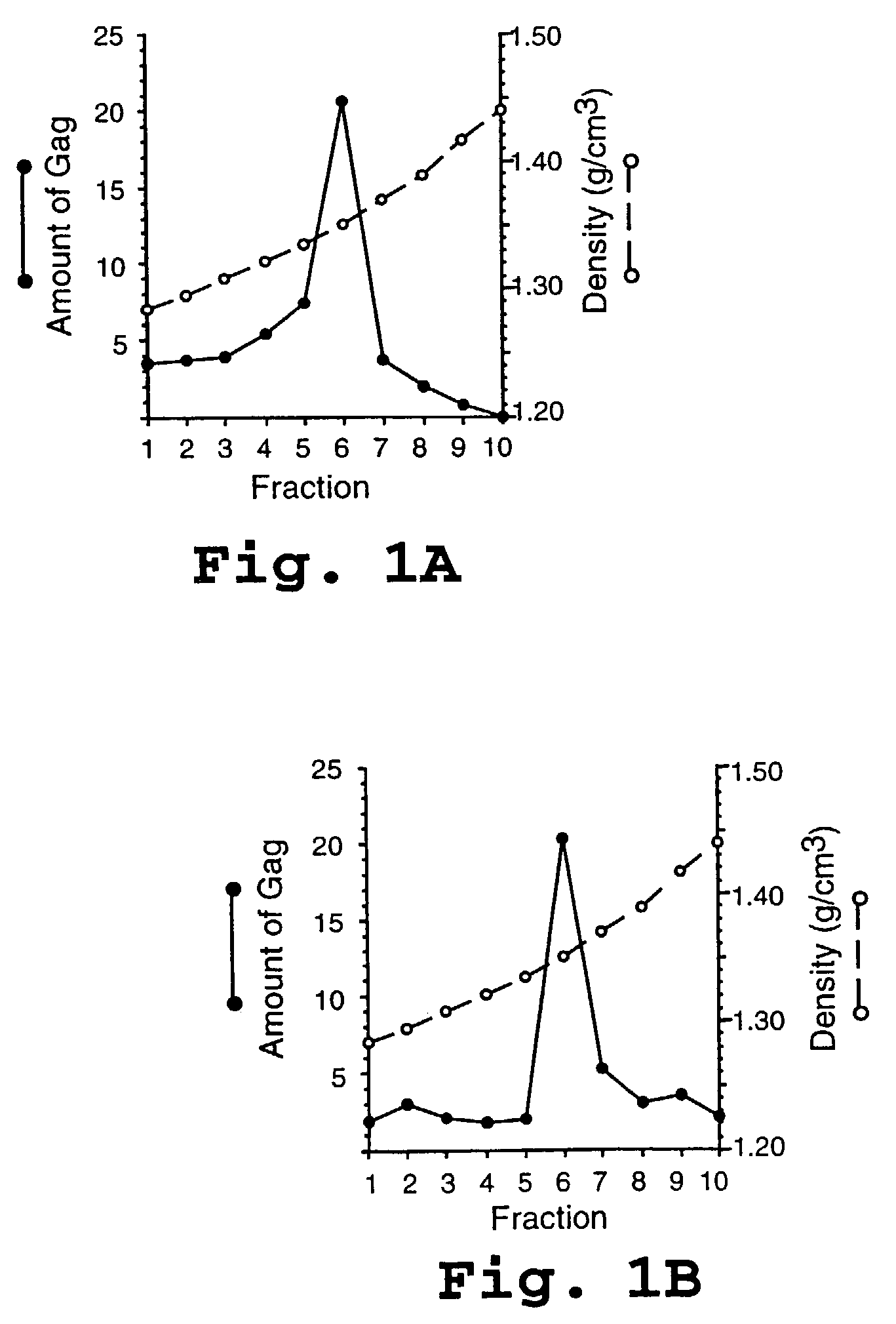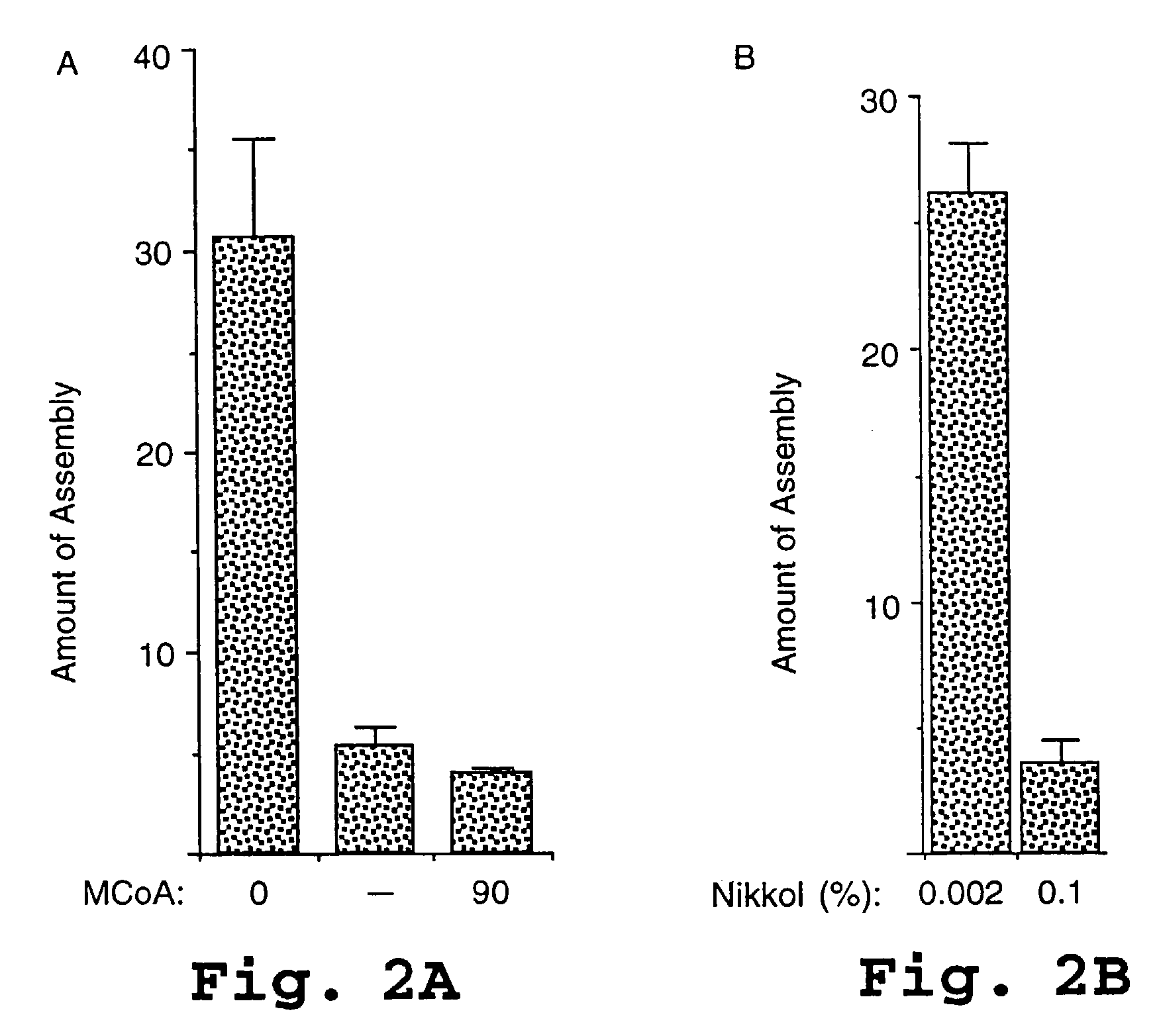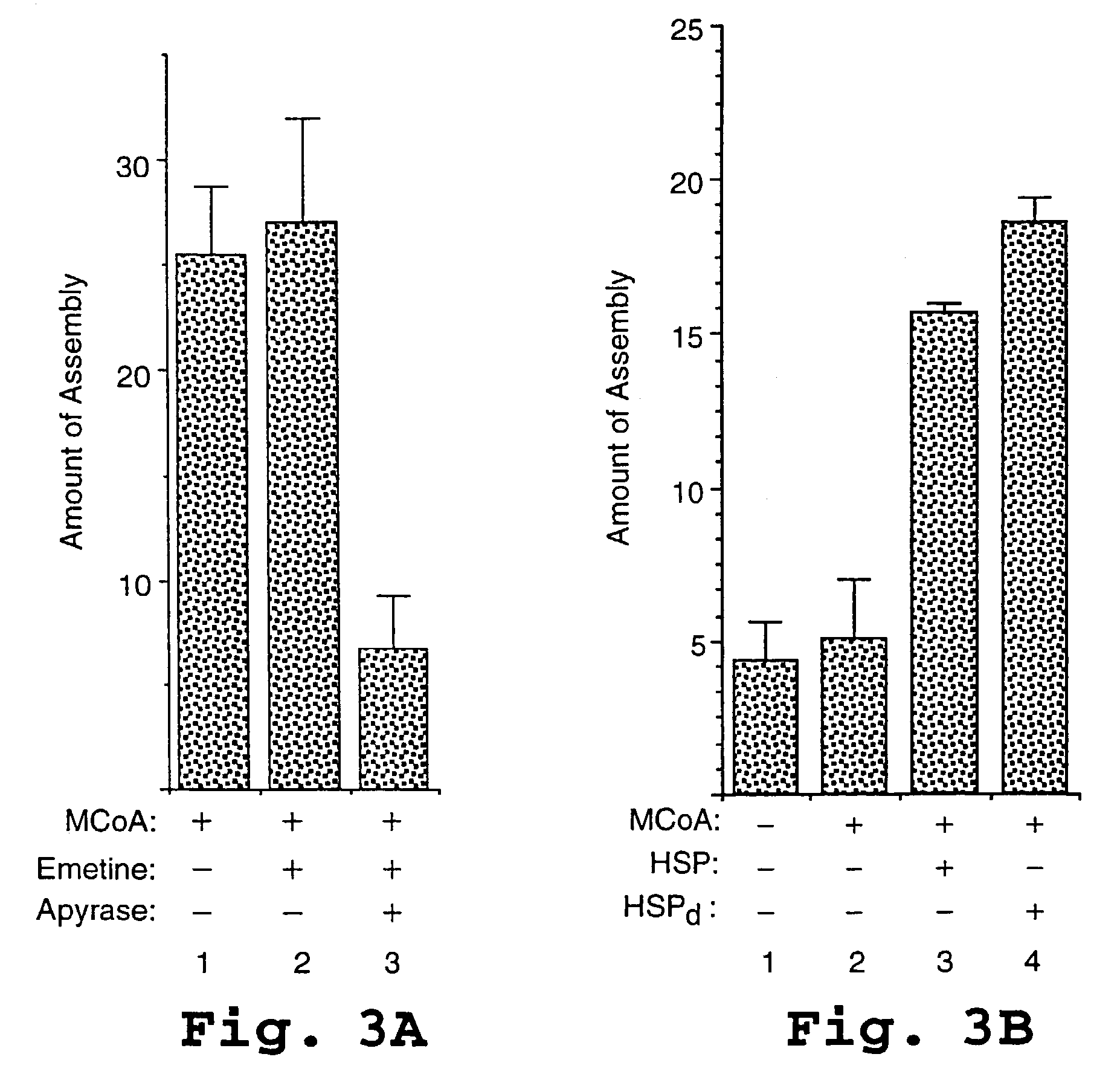HIV capsid assembly-associated compositions and method
a technology of compositions and capsids, applied in the field of compositions and methods for hiv capsids, can solve the problems of inability to fully understand the actual mechanism of coordinating the formation of hiv capsids from 1500 gag monomers, inability to study the assembly of capsids in cellular systems, and inability to fully grasp the hiv capsid particles. to inhibit the formation or formation of capsids, the effect of inhibiting the formation of hiv capsid
- Summary
- Abstract
- Description
- Claims
- Application Information
AI Technical Summary
Benefits of technology
Problems solved by technology
Method used
Image
Examples
example 1
Cell Free Protein Synthesis
[0173]1. Transcription
[0174]The plasmid containing the Gag coding region was linearized at the EcoR1 site (as described in the NEB catalogue). The linearized plasmid was purified by phenol-chloroforn extraction (as described in Sambrook, et al., 1989) and this plasmid was adjusted to a DNA concentration of 2.0 mg / ml. The transcription was carried out using a reaction that contained: 40 mM Tris Ac (7.5), 6 mM Mg Ac, 2 mM Spermidine, 0.5 mM ATP, 0.5 mM CTP, 0.5 mM UTP, 0.1 mM GTP, 0.5 mM diguanosine triphosphate (cap), 10 mM Dithiothreitol, 0.2 mg / ml transfer RNA (Sigma Chemical Co.), 0.8 units / microliter RNAse inhibitor (Promega), 0.4 units per microliter of SP6 Polymerase (NEB). Mutant DNAs were prepared as described by Gottlinger, et al., 1986; Jowett, et al., 1992; Hockley, et al., 1994; or Zhao, et al., 1994; herein incorporated by reference.
[0175]2. Translation
[0176]Translation of the transcription products was carried out in wheat germ extract contain...
example 2
Preparation of HSS, HSP, and HSPd
[0185]Where indicated, wheat germ extract prepared as described in Example 1 was centrifuged at either 50,000 rpm for 21 min or 100,000 rpm for 30 min in a TLA 100 rotor (Beckman Instruments, Palo Alto, Calif.). The supernatant (HSS) of the 50,000 rpm spin was used for cell-free translation and assembly reactions. The pellet of the 100,000 rpm spin (HSP) was resuspended at a 5× concentration in buffer (25 mM Hepes pH 7.4, 4 mM MgAc, 100 mM KAc, 0.25M sucrose). Wheat germ extract adjusted to contain a concentration 0.5% “NIKKOL” was subjected to the same ultracentrifugation in parallel to generate the detergent treated high speed pellet (HSPd). This pellet was washed twice with 200 μL of the above non-detergent buffer in order to remove traces of detergent, and then resuspended as described above. Following treatment with emetine at 50 min, 1.8 μL of HSP or HSPd was added to the 18 mL cell-free reactions programmed with HSS. Control reactions were tre...
example 3
Transfections and Production of Authentic Capsids
[0186]Cos-1 cells (University of California Cell Culture Facility) were transfected by the adenovirus-based method (Forsayeth and Garcia, 1994), using plasmids pSVGagRRE-R (a mammalian expression vector that encodes Gag as well as the Rev response element required for expression of Gag in mammalian cells) and pSVRev (a mammalian expression vector that encodes the Rev gene, the product of which is required for expression of Gag in mammalian cells) (Smith, et al., 1993). These vectors were provided by D. Rekosh (University of Virginia). Four days after transfection, immature HIV particles were purified from the culture medium by sedimentation through a 4 ml 20% sucrose cushion in an SW 40 rotor at 29,000 rpm for 120 min (Mergener, et al., 1992). The pellet was harvested, stored in aliquots at −80° C., and treated with 1% NP40 buffer just before use to remove envelopes. These de-enveloped authentic immature HIV capsids were used as stand...
PUM
| Property | Measurement | Unit |
|---|---|---|
| molecular weight | aaaaa | aaaaa |
| density | aaaaa | aaaaa |
| diameter | aaaaa | aaaaa |
Abstract
Description
Claims
Application Information
 Login to View More
Login to View More - R&D
- Intellectual Property
- Life Sciences
- Materials
- Tech Scout
- Unparalleled Data Quality
- Higher Quality Content
- 60% Fewer Hallucinations
Browse by: Latest US Patents, China's latest patents, Technical Efficacy Thesaurus, Application Domain, Technology Topic, Popular Technical Reports.
© 2025 PatSnap. All rights reserved.Legal|Privacy policy|Modern Slavery Act Transparency Statement|Sitemap|About US| Contact US: help@patsnap.com



